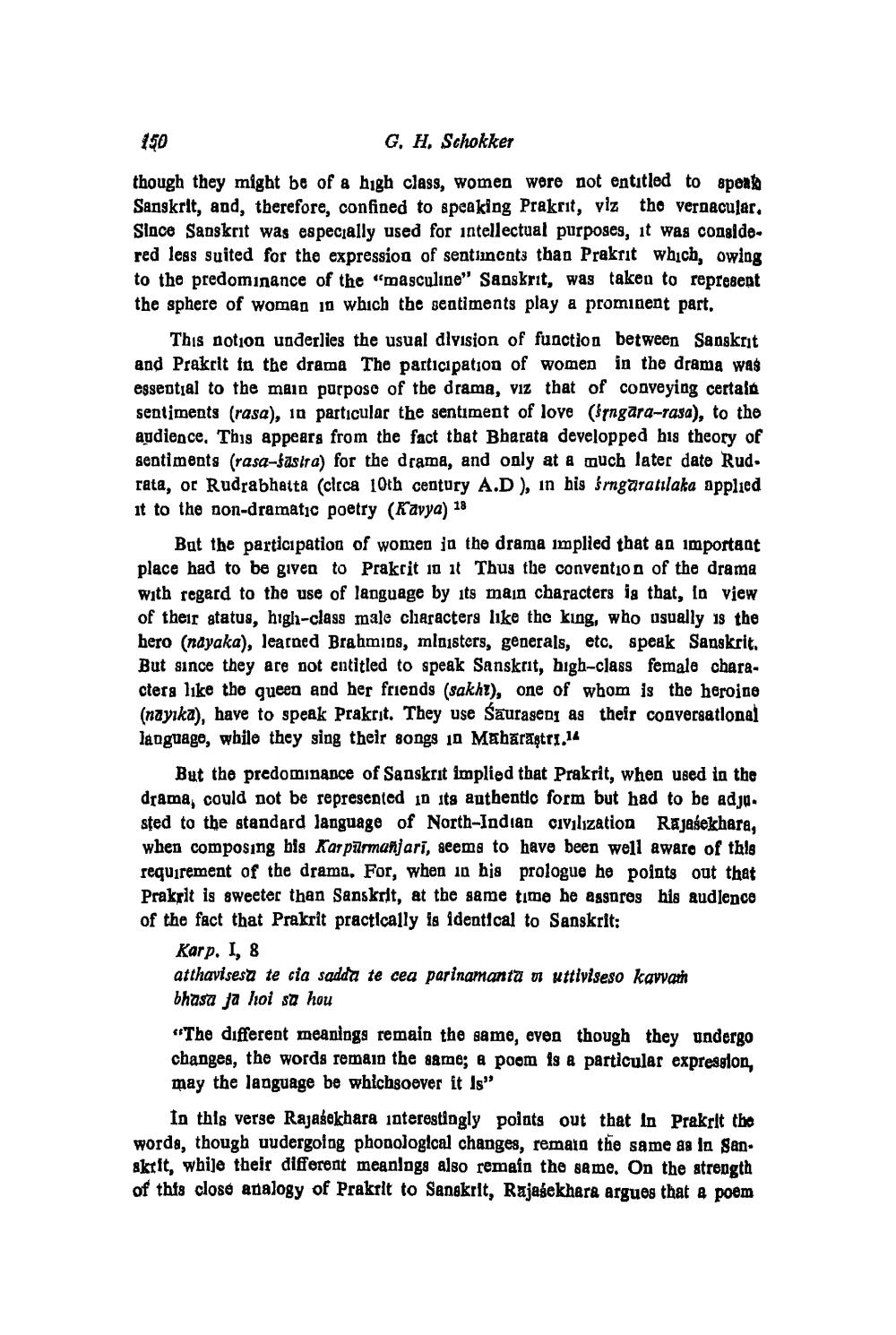________________
150
G, H. Schokker
though they might be of a high class, women were not entitled to sponta Sanskrit, and, therefore, confined to speaking Prakrit, yiz the vernacular, Slace Sanskrit was especially used for intellectual purposes, it was considered less suited for the expression of sentincnts than Prakrit which, owing to the predominance of the "masculine" Sanskrit, was taken to represent the sphere of woman in which the sentiments play a prominent part.
This notion underlies the usual dlvision of function between Sanskrit and Prakrit in the drama The participation of women in the drama was essential to the main purpose of the drama, viz that of conveying certain sentiments (rasa), in particular the sentiment of love (rngara-rasa), to the audience. This appears from the fact that Bharata developped his theory of sentiments (rasa-fasira) for the drama, and only at a much later date Rud. rata, oc Rudrabhalta (clcca 10th century A.D), in bis śrngaratılaka applied it to the non-dramatic poetry (Kavya) 18
But the participation of women ja the drama implied that an important place had to be given to Prakcit in it Thus the convention of the drama with regard to the use of language by its main characters is that, in view of their atatus, high-class male cliaracters like the king, who usually is the hero (nayaka), learned Brahmios, mlaisters, generals, etc. speak Sanskrit But since they are not entitled to speak Sanskrit, high-class female characters like the queen and her friends (sakht), one of whom is the heroine (nayıka), have to speak Prakrit. They use Sauraseni as their conversational language, while they sing their songs 10 Mabarastr1.14
But the predominance of Sanskrit implied that Prakrit, when used in the drama, could not be represented in its authentic form but had to be adju. sted to the standard language of North-Indian civilization Rajasekhara, when composing bis Karpurmanjarī, seems to have been well aware of this requirement of the drama. For, when in his prologue he points out that Prakrit is sweeter than Sanskrit, at the same time he asgnres his audience of the fact that Prakrit practically is identical to Sanskrit:
Karp. 1, 8 atthavisesa te cia sadda te cea parinamanta n uttiviseso kavva bhasa ja hoi sa hou
"The different meanings remain the same, even though they undergo changes, the words remain the same; a poom is a particular expression, may the language be whichsoever it is"
In this verse Rajasekhara interestingly points out that In Prakrit the worda, though uudergoing phonological changes, remain the same as in Sanskrit, while their different meanings also remain the same. On the strength of this close analogy of Prakrit to Sanskrit, Rajasekhara argues that a poem




